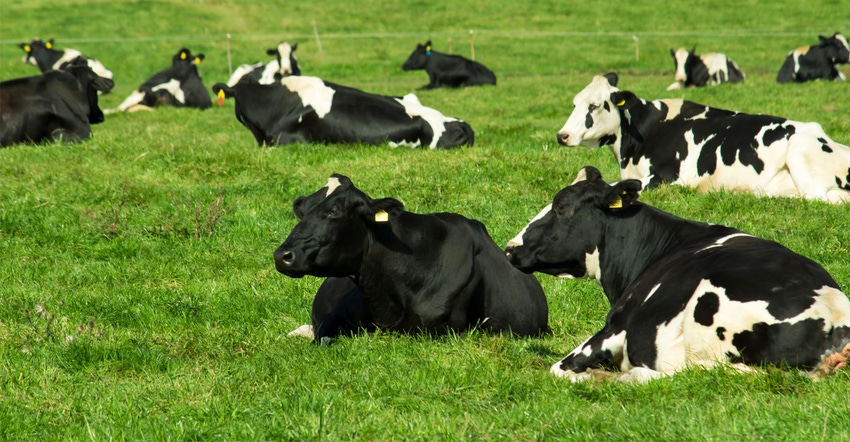June 1, 2021

With the heat and humidity of summer also comes flies. Flies can be a pesky nuisance at best and a vector for disease at their worst. Don’t let the flies “carry you away” on your farm this summer. Learning which flies are present can help you manage your farm’s overall fly load.
Several fly species
There are species of flies that are a nuisance, and species of flies that like to physically feed on cattle. Houseflies are present around a dairy farm but do not feed on animals. They are attracted to manure, moisture and spilled feeds. Houseflies can breed and feed in and on manure, making them a potential threat to milk quality and safety as they move from their environment to milking equipment.
Horn flies, face flies, and stable flies feed on blood or body fluids. Horn flies start their life cycle in cattle manure pats. The adult flies congregate along the backs and sides of cows. Horn flies are particularly persistent and come back continually when displaced, causing animals to expend energy trying to remove them.
Face flies look similar to houseflies but are present on an animal’s face, seeking secretions from the eyes or near the mouth. Face flies are vectors of disease such as pinkeye. Face flies are more common on animals in pasture settings.
Stable flies start their development in various places. Decomposing bedding, feed or other organic matter that builds up near cattle, including any manure or bedding stacks that have accumulated over winter, are all habitat for this fly species to develop in. Stable flies also resemble the common housefly but have piercing mouthparts instead of sucking mouthparts. They tend to congregate on the legs of cattle. Stable flies have a painful bite, and animals will expend energy trying to rid themselves of this fly.
All of these fly species can be a nuisance for pasture-based dairies, but usually the housefly and stable fly are the ones you find in a barn setting. All flies go through distinct life stages (egg, larva, pupa, adult), and any place you can disrupt the life cycle can help manage the fly population on farm.
Sanitation practices
For most of the flies on the farm, thorough cleaning and sanitation practices are helpful in preventing favorable environments for flies to reproduce in. For example, proper cleaning of calf feeding equipment plays a role. Milk room cleanliness is important, not only for food safety reasons, but also to prevent residual organic matter that attracts flies and provides a food source or potential breeding ground.
Likewise, keeping cattle and calves clean with fresh bedding is another key piece of the fly control puzzle. Excess amounts of moisture paired with manure and other organic matter make for a prime environment for flies. Proper ventilation and air movement with fans can help not only manage moisture but also reduce the likelihood of a fly finding its way onto your animals.
Management of manure, manure stacks and compost is important as well. Regular turning of compost to speed microbial decomposition and to ensure proper heating of the compost will reduce fly-friendly environments.
For pasture-based dairies, dung beetles may be an important part of helping break the horn fly life cycle. More information on dung beetles in Wisconsin can be found at bit.ly/WIDungBeetles.
More management
Other management steps can play a role in minimizing flies. Targeting key areas of concern such as garbage receptacles with nearby traps, sticky tape or glue boards, and aerosolized insecticide can reduce the population. When using insecticides as part of your management program, it is important to rotate insecticide classes periodically to reduce fly resistance. Some farms choose to employ a professional exterminator during peak fly pressure periods.
Other farms may integrate insect growth regulators in the feed to break the life cycle. If you choose to employ parasitoids as a biological control, be sure there are non-adult stages present, as the parasitoids are not effective on adult flies.
Physical barriers or exclusion of flies from barns is another simple but effective way to limit access to cattle and equipment. Making sure window screens are free of rips, tears or holes and haven’t pulled away from the frame is important to preventing fly access. Replacing weather stripping on doors can be helpful in combating flies in the barn and milk house.
Management of flies preserves your cattle’s comfort and energy use toward milk production and growth. Fly control also helps prevent milk contamination, ensuring food safety and quality. Fly control doesn’t have to be complicated, but it does need to be consistent.
Seefeldt is the Extension dairy and livestock educator in Eau Claire County, Wis.
You May Also Like




